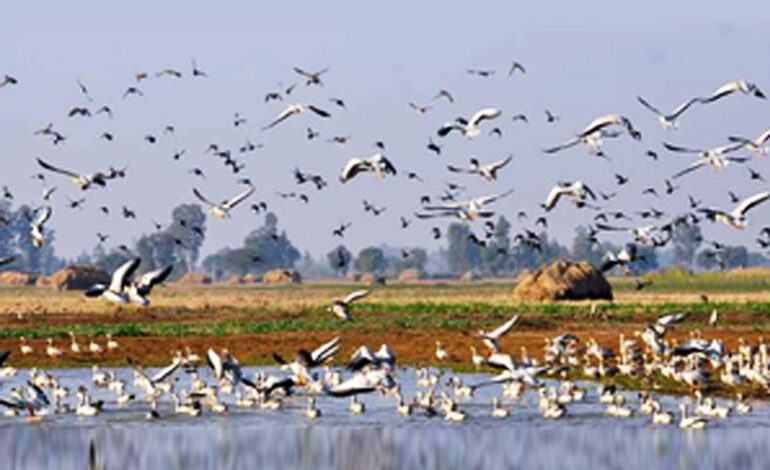Srinagar, Dec 7 (IANS) – As the evening sky fills with the sound of chirping and flapping wings, large flocks of migratory birds land on the wetlands of Kashmir, creating a breathtaking scene. These birds, visiting the Hokersar bird reserve near Srinagar and other wetlands, bring a riot of color and life to the region every winter.
Bird species like Teals, Mallards, Coots, Wigeons, Shovelers, Brahminy Ducks, Pochards, Pintails, Tufted Ducks, Shelducks, and Greylag Geese come from faraway places such as Siberia, China, Japan, Eastern Europe, and the Philippines. They escape the harsh cold of their summer homes to enjoy the relatively milder winter in Kashmir.
Wildlife Warden Tawheed Ahmad Deva shared that fewer birds have arrived this year so far because of dry weather. However, as rain and snow are expected soon, the number of birds is likely to grow over the next two weeks. “If we expected 100 bird species by now, about 60 have arrived. This will improve as winter weather sets in,” he explained.
Last year, 8 to 12 lakh migratory birds visited Kashmir’s wetlands. In 2021-2022, the number was slightly higher, at 11 to 12 lakh.
Some species, called ‘birds of passage,’ only stay briefly in the Valley during early winter or late spring as they migrate to and from the Indian plains. These include Sandhill Cranes and Cormorants.
The first birds to arrive in the Valley are usually the Coots and Teals, while the Greylag Geese follow in early December. Major bird reserves in Kashmir include Hokersar, Chatlam, Shallabugh, and Hygam. Birds also flock to Wular Lake, Dal Lake, and other water bodies in the region.
Bird poaching remains a challenge for the wildlife department. Tawheed Ahmad Deva noted, “We have control rooms to monitor the reserves and prevent poaching. These birds are our honored guests, bringing beauty and highlighting the health of our wetlands and ecosystem.”
Watching migratory birds in flight is a stunning sight. The eldest bird leads the flock, and if it becomes unwell, the next in line takes over. These birds travel thousands of miles with amazing precision, guided by instinct. The journey is so demanding that they lose more than half their body weight during the flight.
Kashmir has a tradition of sharing stories about migratory birds. On cold winter nights, elders tell these ‘Duck tales’ to children, keeping the legacy alive. These stories teach future generations about the importance of protecting wetlands and their role in preserving nature for humankind.







